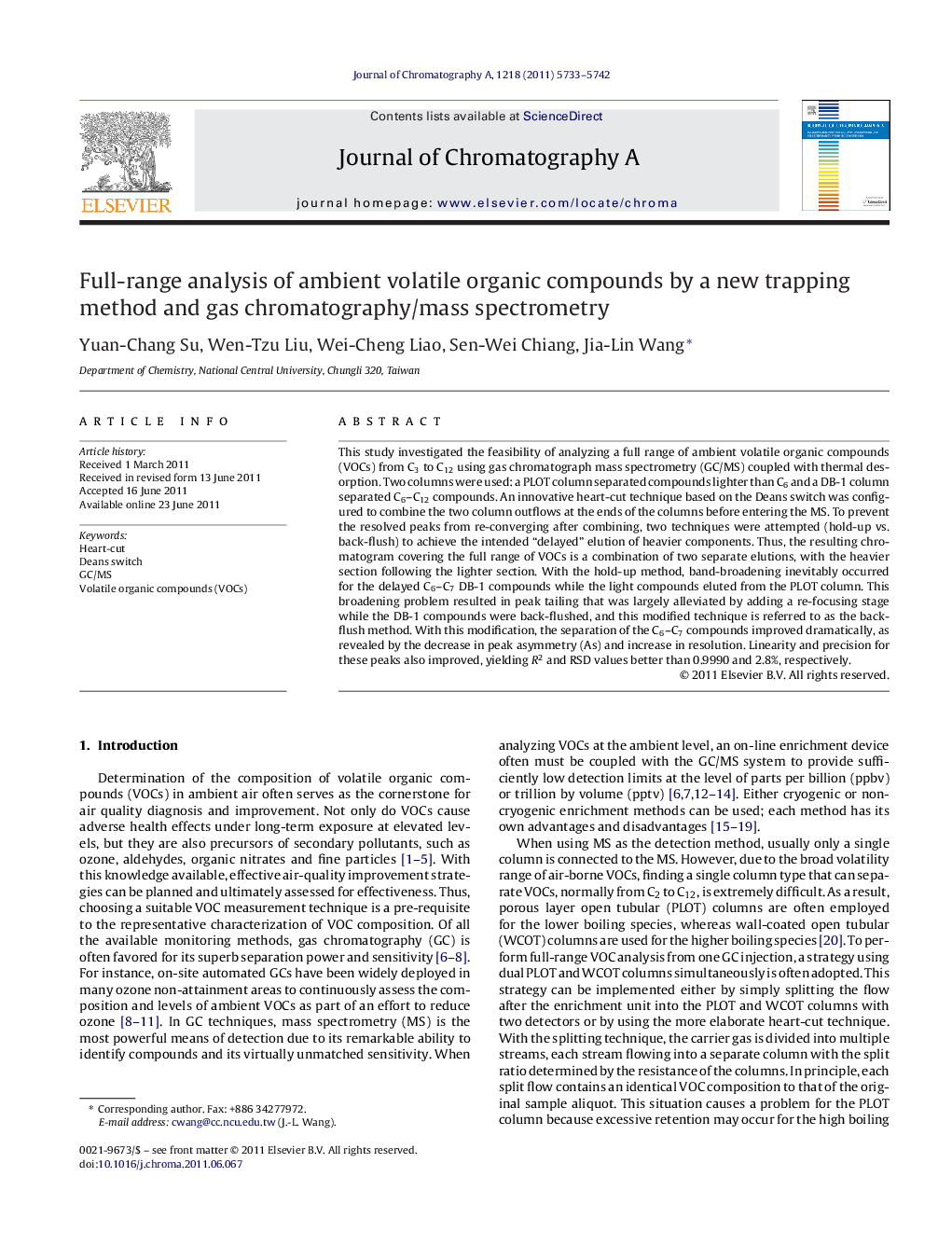| Article ID | Journal | Published Year | Pages | File Type |
|---|---|---|---|---|
| 1203379 | Journal of Chromatography A | 2011 | 10 Pages |
This study investigated the feasibility of analyzing a full range of ambient volatile organic compounds (VOCs) from C3 to C12 using gas chromatograph mass spectrometry (GC/MS) coupled with thermal desorption. Two columns were used: a PLOT column separated compounds lighter than C6 and a DB-1 column separated C6–C12 compounds. An innovative heart-cut technique based on the Deans switch was configured to combine the two column outflows at the ends of the columns before entering the MS. To prevent the resolved peaks from re-converging after combining, two techniques were attempted (hold-up vs. back-flush) to achieve the intended “delayed” elution of heavier components. Thus, the resulting chromatogram covering the full range of VOCs is a combination of two separate elutions, with the heavier section following the lighter section. With the hold-up method, band-broadening inevitably occurred for the delayed C6–C7 DB-1 compounds while the light compounds eluted from the PLOT column. This broadening problem resulted in peak tailing that was largely alleviated by adding a re-focusing stage while the DB-1 compounds were back-flushed, and this modified technique is referred to as the back-flush method. With this modification, the separation of the C6–C7 compounds improved dramatically, as revealed by the decrease in peak asymmetry (As) and increase in resolution. Linearity and precision for these peaks also improved, yielding R2 and RSD values better than 0.9990 and 2.8%, respectively.
